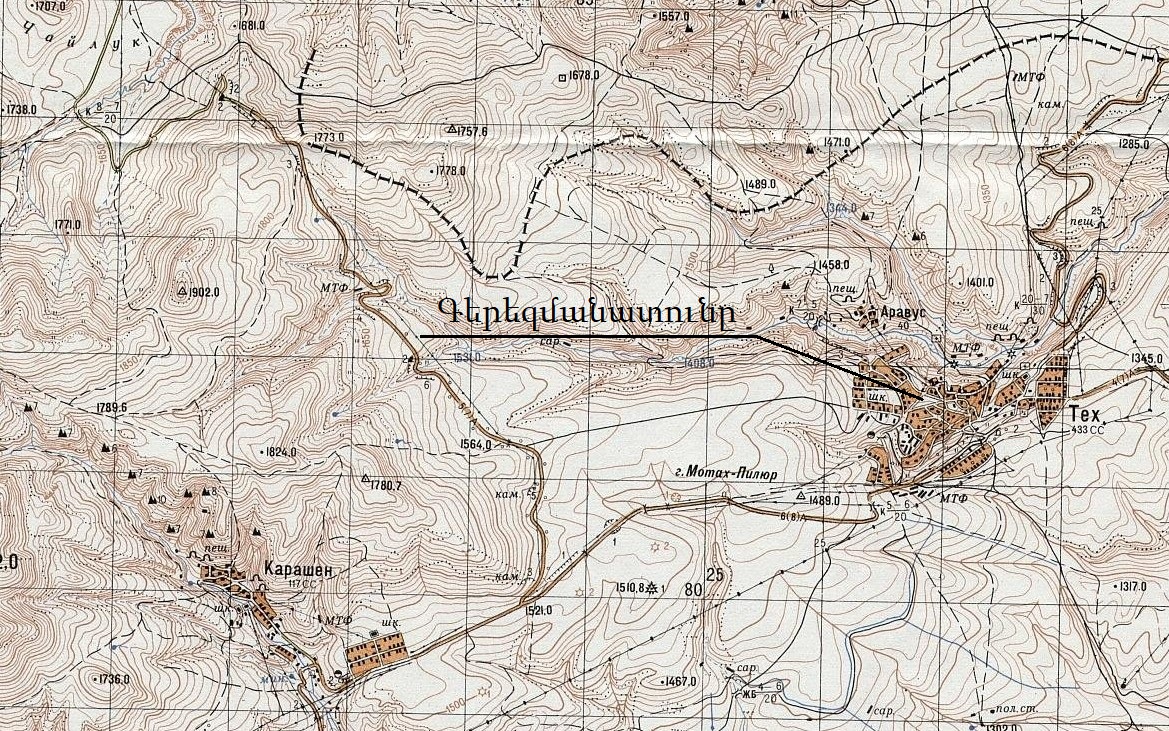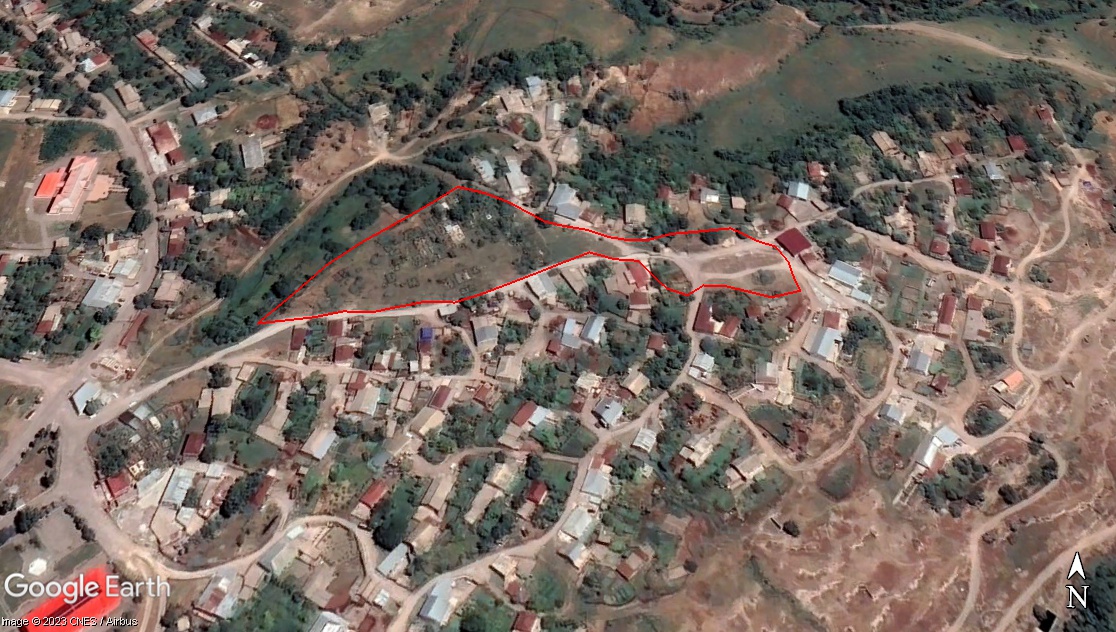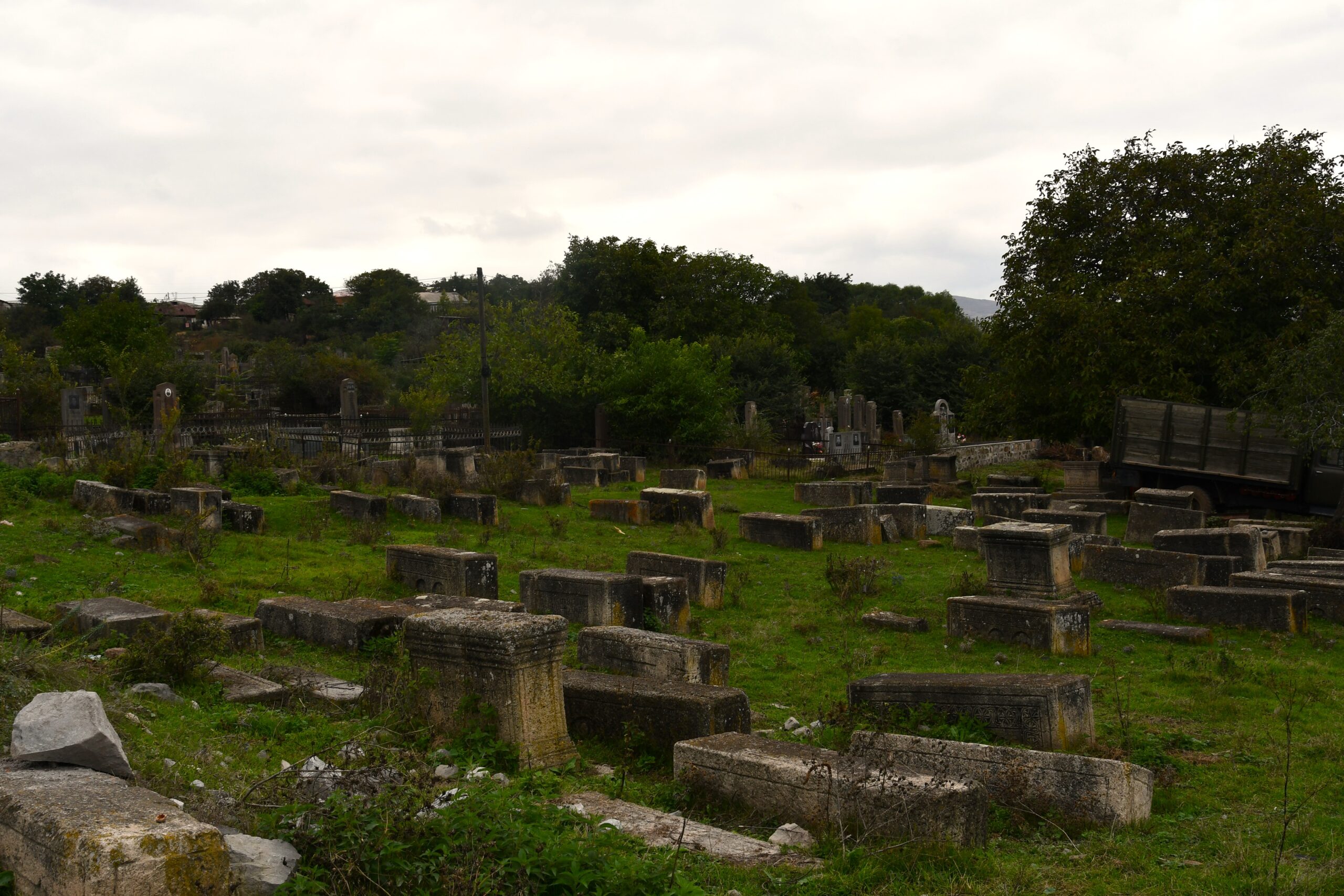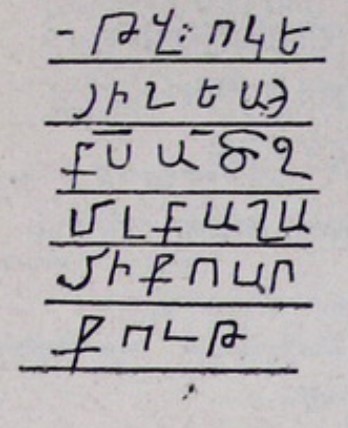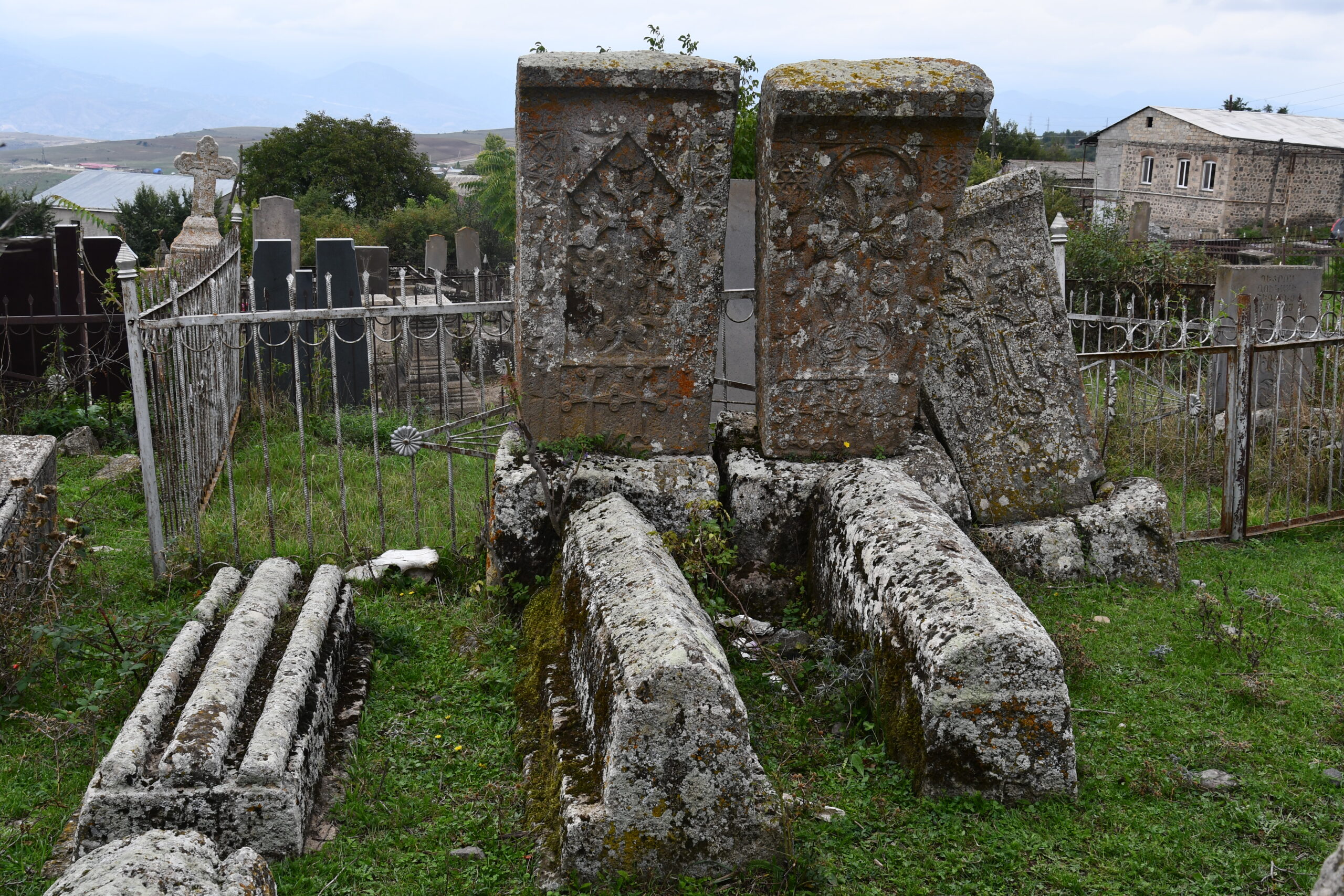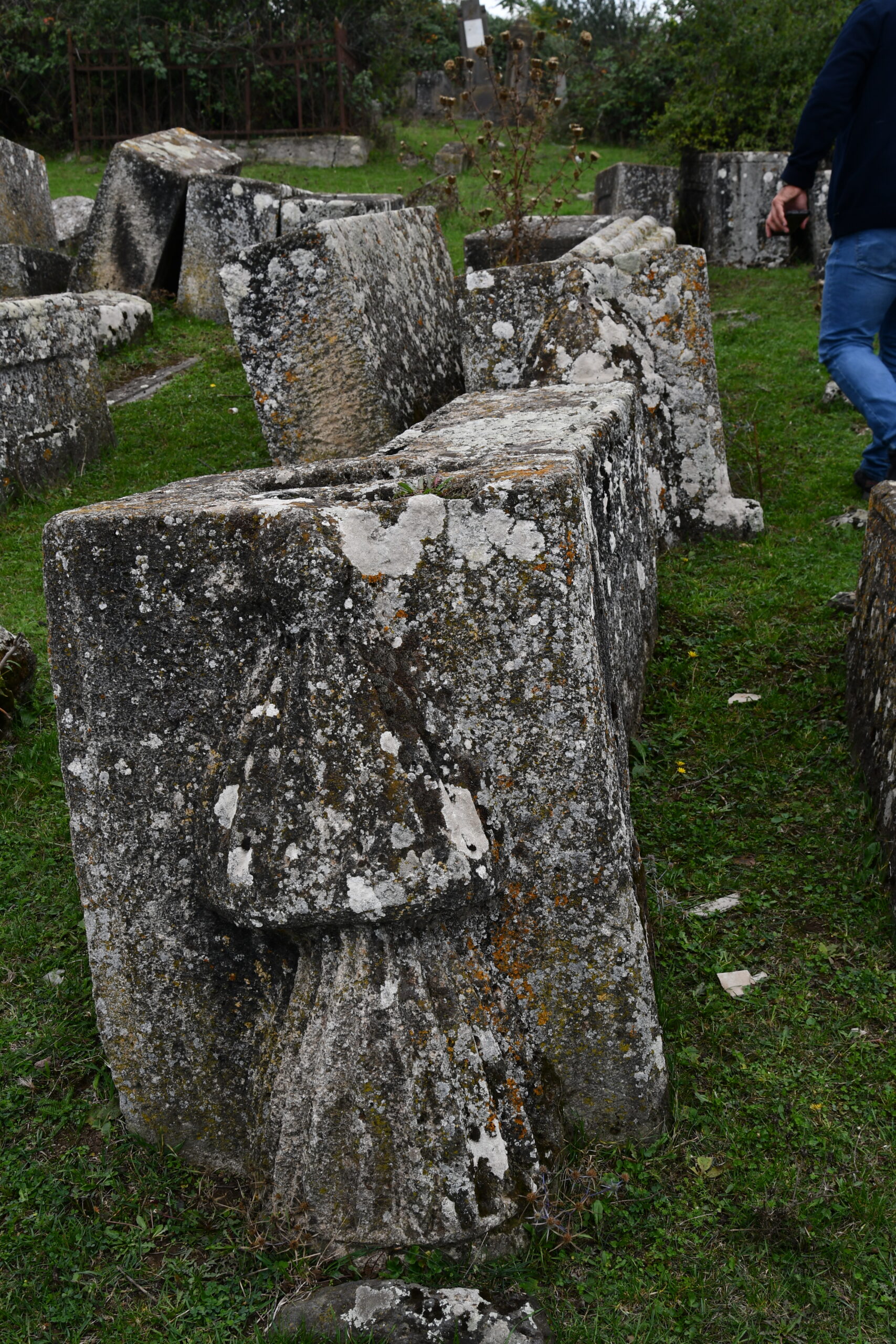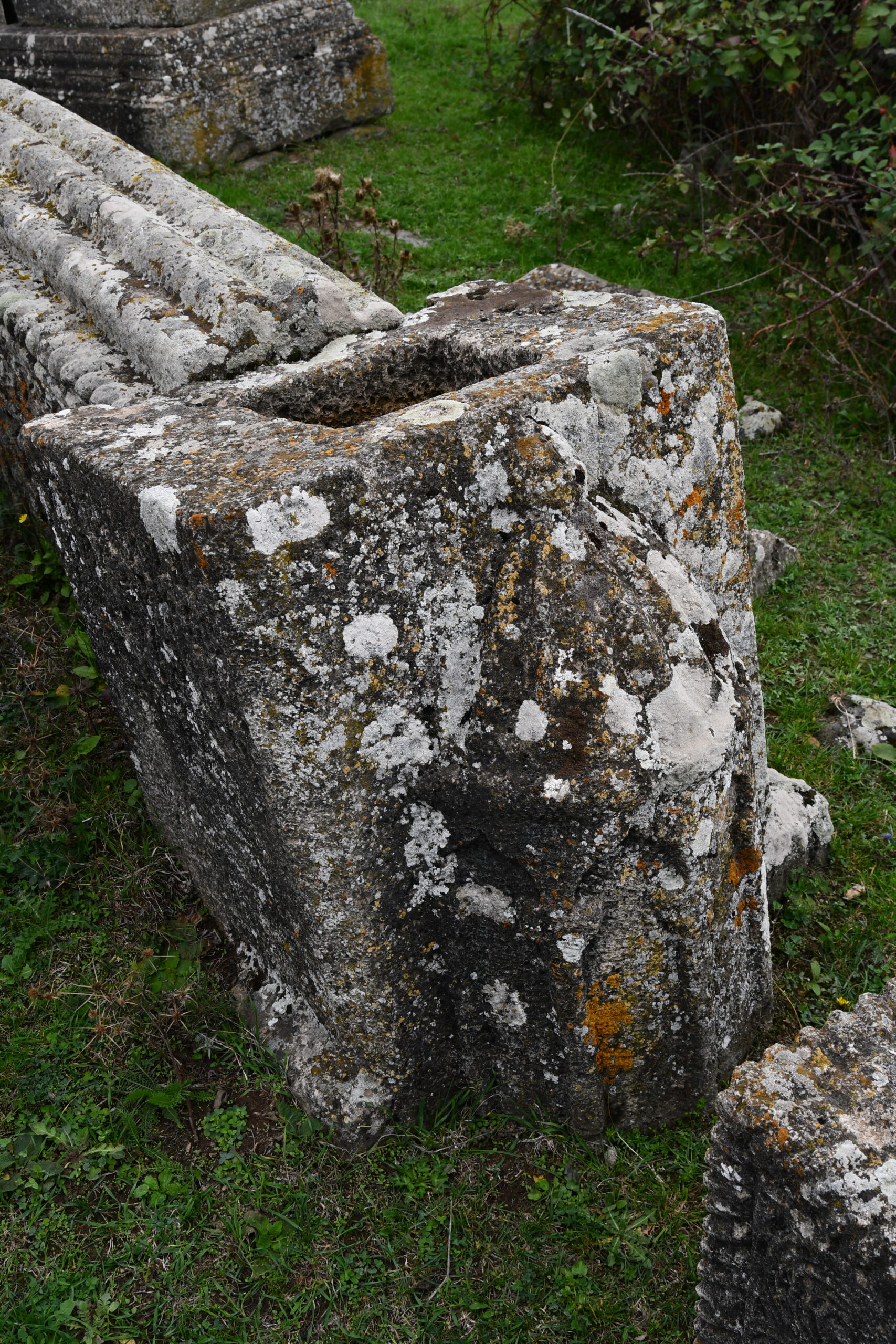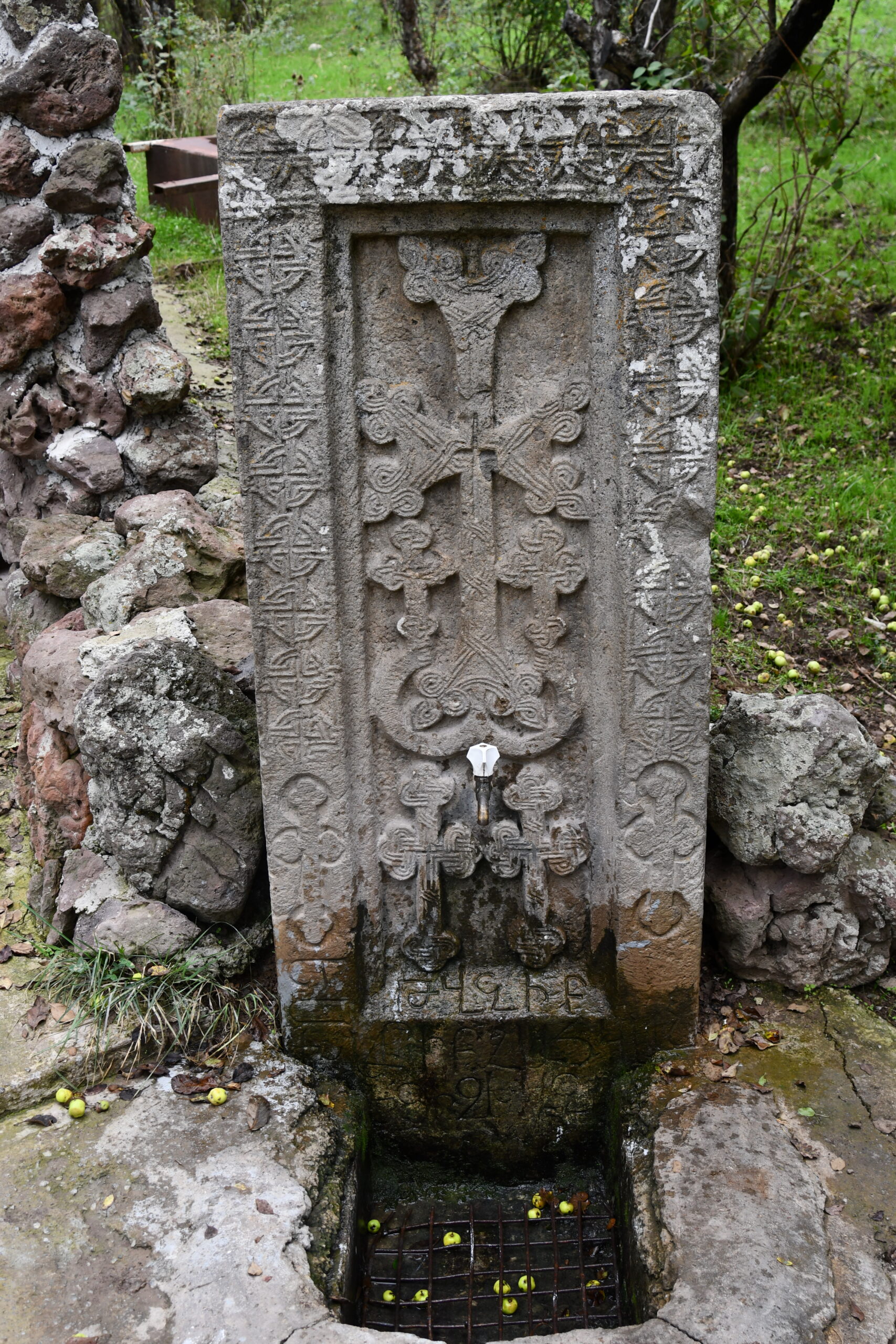The cemetery of Tegh village
Location
The namesake village of Tegh, which serves as the center of the Tegh enlarged community, is situated in the Syunik region of the Republic of Armenia. It is located 100 km away from the regional center, Kapan, and 20 km away from the city of Goris. It is situated at an altitude of 1360 meters above sea level. One of the prominent monuments in the area is the large cemetery of the village (Fig. 1).
Historical overview
The historical Tegh settlement has been mentioned since the 10th century, when Queen Shahandukht of Syunik founded and built the village in 988, dedicating it to the Tatev Monastery (Orbelean 1910, 252).
Numerous tombstones and khachkars, dating from the 10th to the 20th centuries, have been preserved within the cemetery (Fig. 2).
Architectural-compositional examination
The large cemetery lies in Tegh village, situated on the northern side of the historical district, covering approximately 1.6 hectares.
Among the earliest relics within this extensive cemetery are khachkars dating back to the 9th and 10th centuries. The oldest inscription discovered thus far dates back to the year 1216. The six-verse inscription is carved on the northern side of the khachkar in the northern part of the cemetery: "(1216 year, remember Christ, the God, Mlkashah, in your kingdom" (CAE 2, 66, 71, fig. 3). There are also stylized and inscribed khachkars from different eras, featuring rich iconography, as well as simple, inscribed, cradle-shaped, flat gravestones, etc. (Fig. 4).
The cradle-shaped or rectangular tombstones in the cemetery are noteworthy, particularly due to their endings, which, according to E. Lalayan, resemble stylized fireplace stones. Regarding these unique tombstones, the author writes in his work "Zangezur Province". "...tombstones in the inner part towards the feet, there are standing stones 2¼ arshin high (1 arshin equals 71.1187 cm), on the western face of which a cross is carved, and on the eastern side, a high carved hearth is brought out", and notes that these indicate that the deceased was from a large hearth (family) (Lalayan 1899, 39, figs. 5, 6). However, we believe that the unique tombstones described do not resemble fireplaces (for example, the fireplace hole is not depicted) and represent dome church stylizations, with dome and arch.
Lalayan also describes the tombstones of the wealthy in the cemetery area: "The tombstones of the wealthy are interesting; these are square stones more than two meters long, 71 cm high, and about 36 cm wide, on both sides of which various scenes are carved in beautiful patterns" (Lalayan 1899, 39).
The khachkars and tombstones adorned with numerous valuable inscriptions and sculptures in the cemetery area serve as significant sources for studying the cultural heritage of the locality and the region (see: CAE 2, 71-74, Khurshudean 2022, 398-407).
The historic cemetery has suffered damage due to various agricultural activities, community expansion, the construction of new roads, and the addition of more modern graves. One of the northeastern khachkars from the cemetery was relocated without its pedestal to the pine grove on the left side of the Tegh-Aravus road (CAE 2, 71, record no. 202, Khurshudean 2022, 398, fig. 7).
The condition following the Azerbaijani aggression in 2020-2022
After the 44-day Artsakh war and subsequent border changes, the large cemetery of Tegh village now lies approximately 800 meters away from the border.
Bibliography
- CAE 2 - Corpus of Armenian Epigraphy, issue 2, Goris, Sisian and Ghapan regions, compiled by S. Barkhudaryan, Publishing House of Academy of Sciences of Armenian Soviet Socialist Republic , Yerevan, 1960.
- Lalayan 1899 - Lalayan E., Zangezur Province, Volume B, Tiflis.
- Khurshudian 2022 - Khurshudian S., Historical Monuments of Tegh Village and Newly Discovered Lithographs, Sion, No. 8-12, Jerusalem.
- Orbelian 1910 - Stepanos Orbelian, History of the Province of Syunik, Tiflis.
